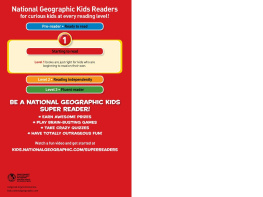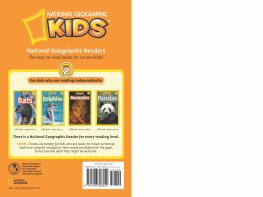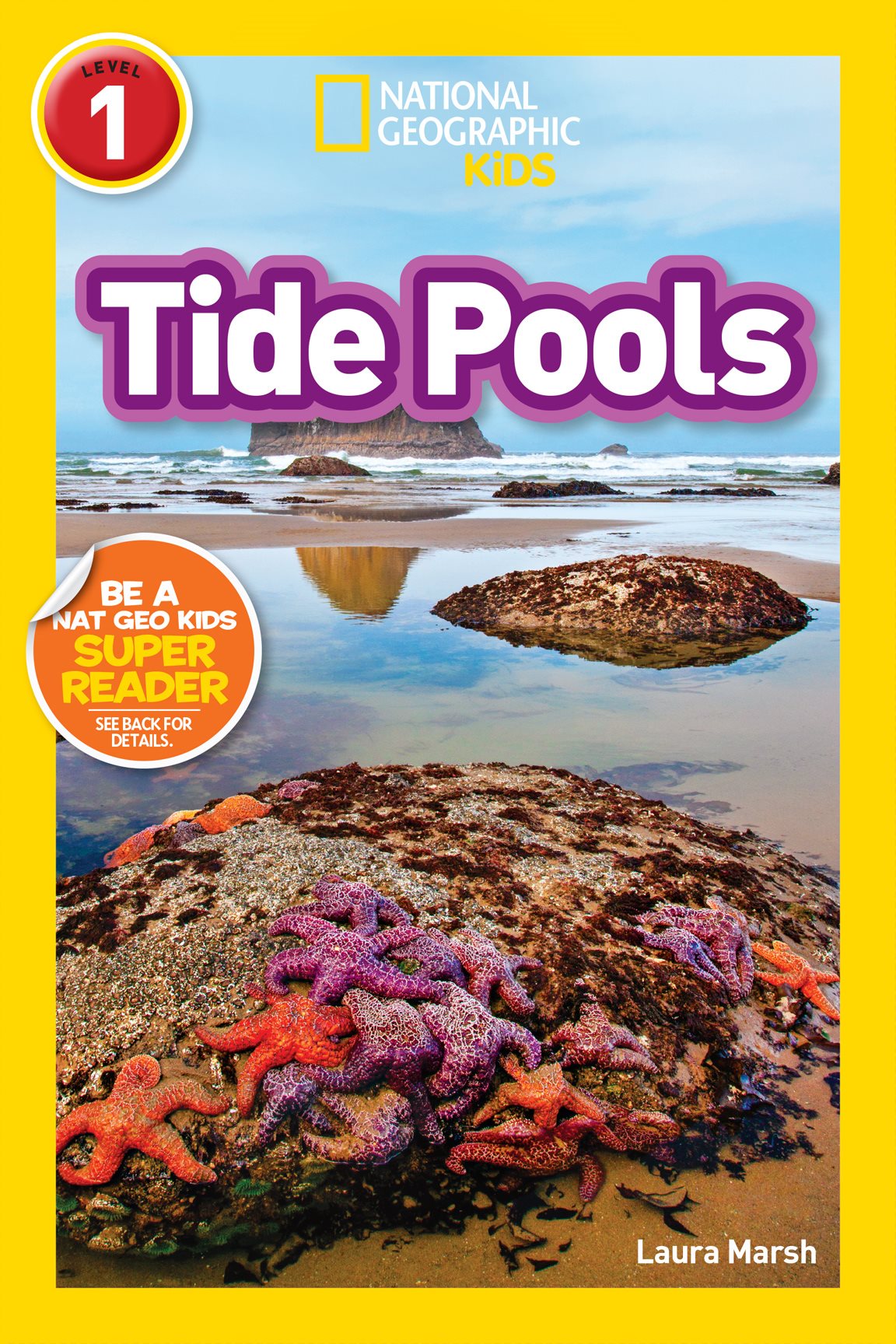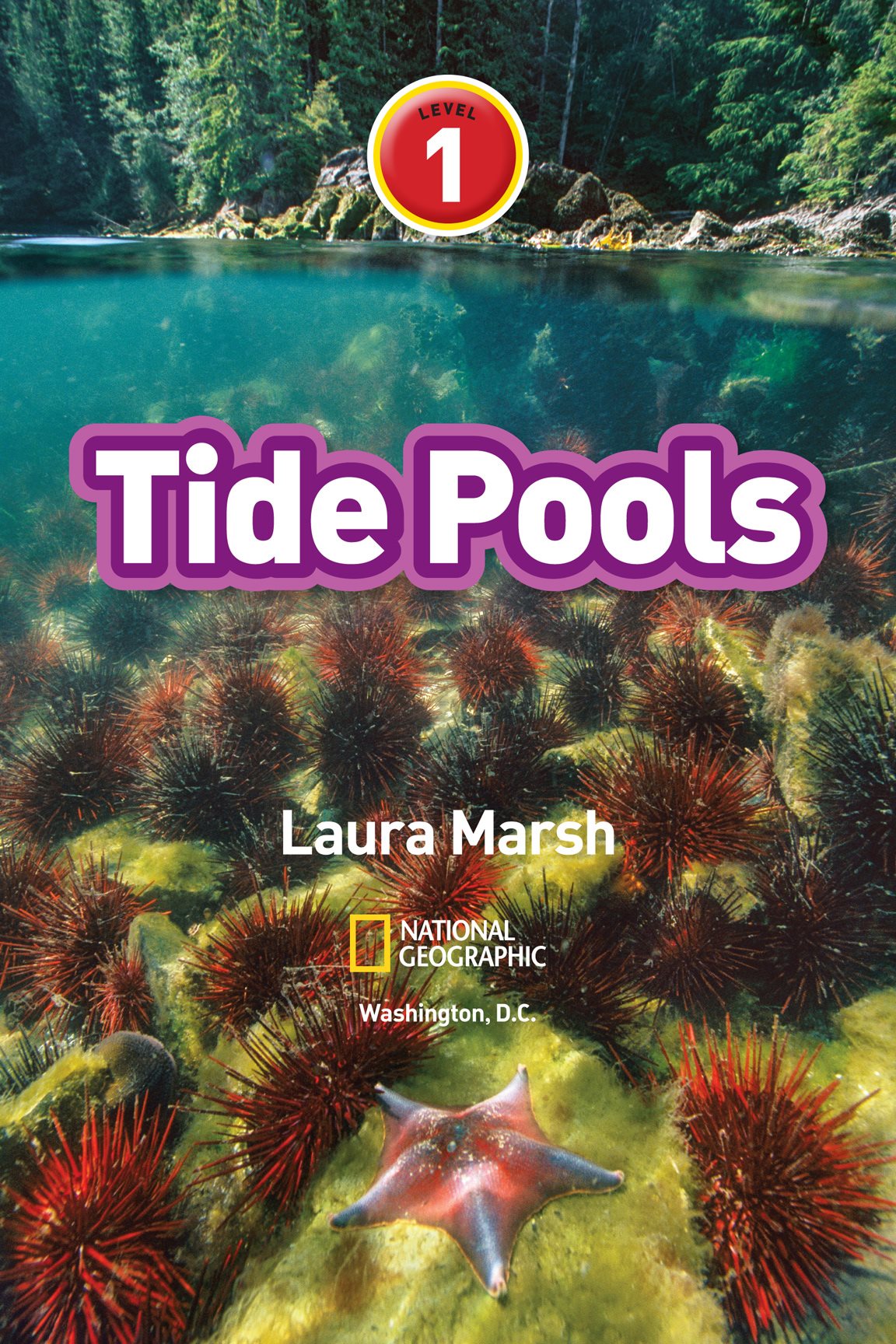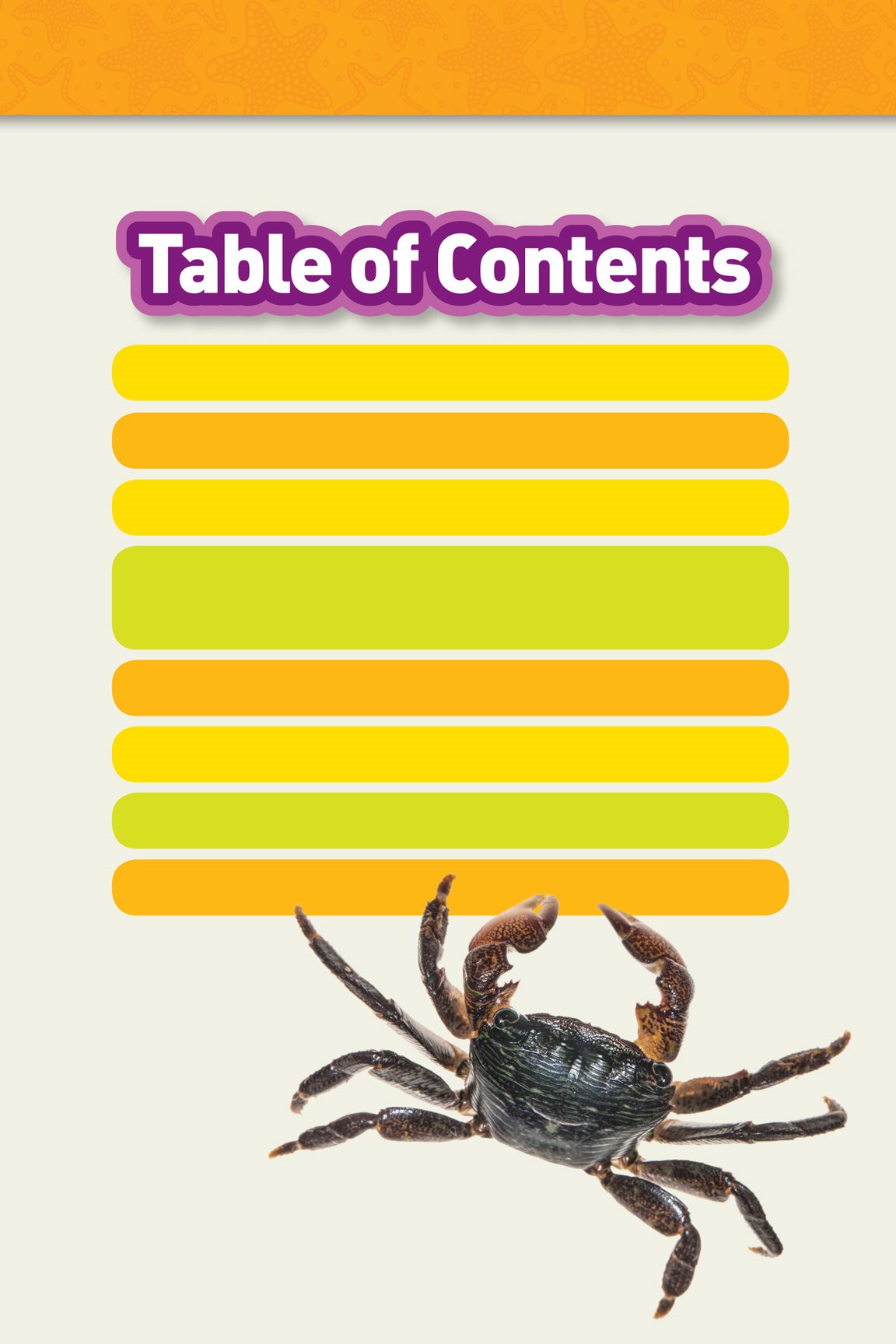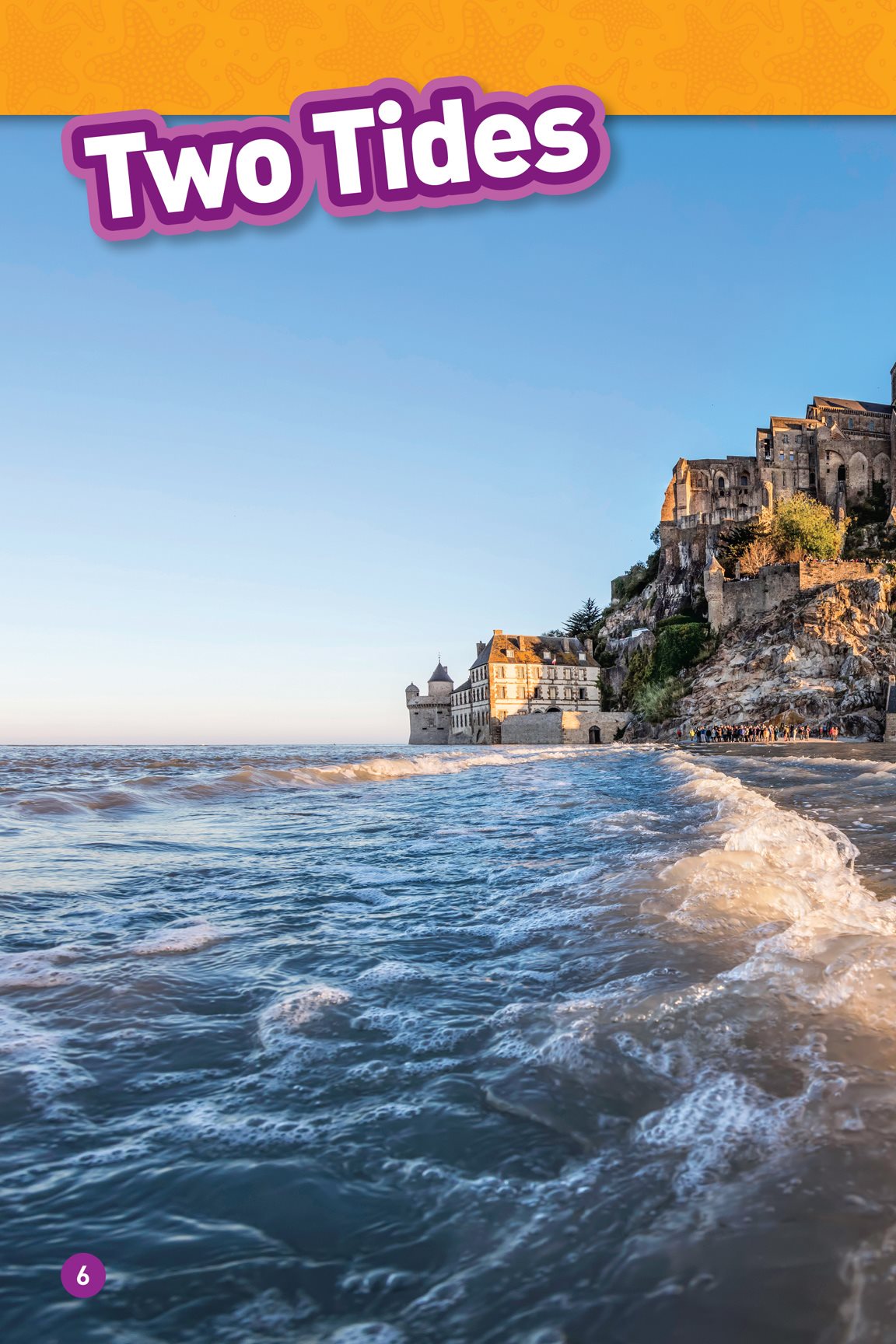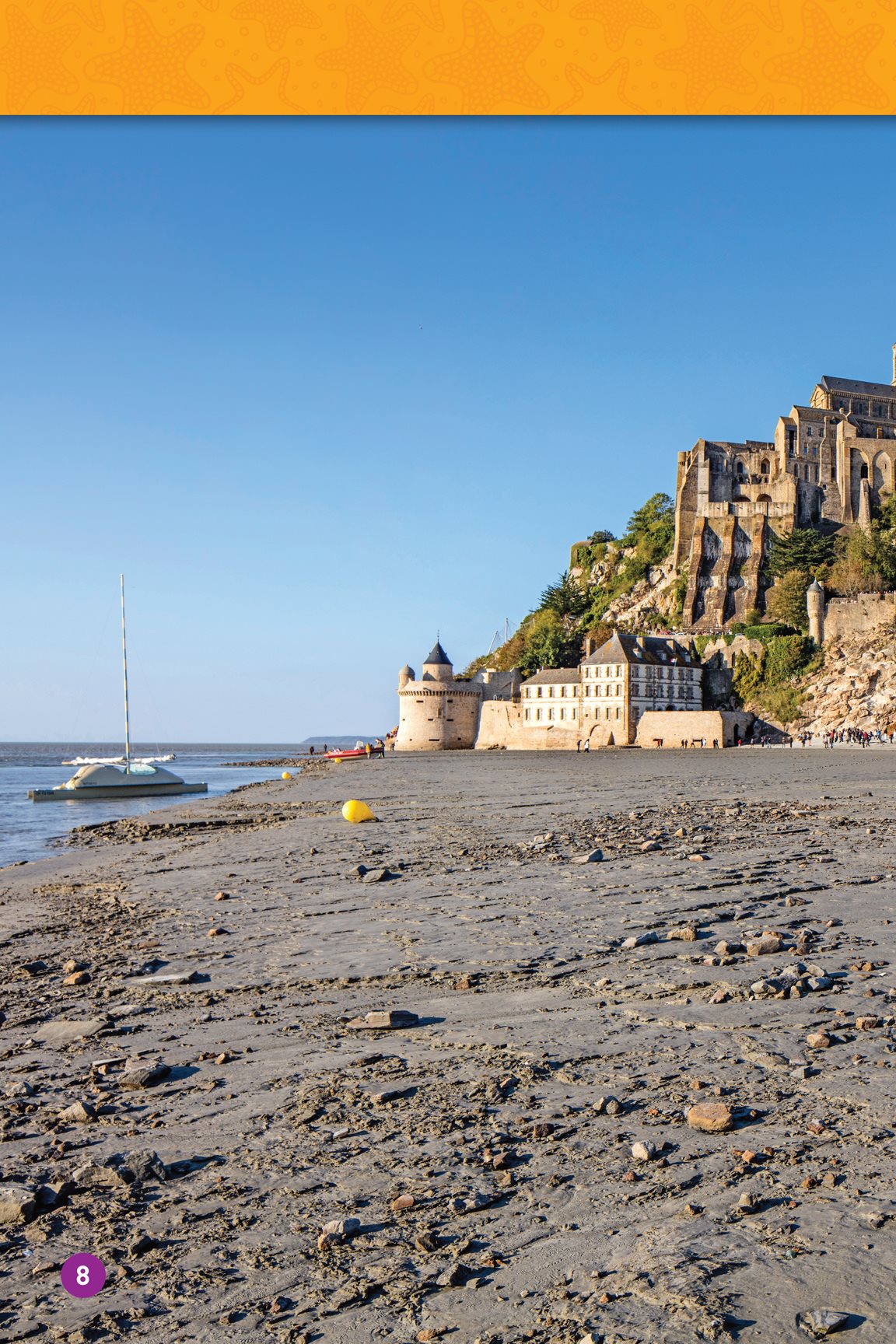
Children are naturally curious about the world around them, and
curiosity is a powerful motivation for reading. Studies show that
informational reading is critical to success in school. National
Geographic Kids Readers allow you to feed your childrens interests
and create readers who not only can read, but also want to read!
To sustain childrens excitement about reading, we have created a
special program called NATIONAL GEOGRAPHIC KIDS SUPER READERS.
As kids read each National Geographic Kids Reader, they cross
off its picture on a free National Geographic Kids Super Readers
poster that parents can download from kids.nationalgeographic.com/
superreaders.
Throughout the process, kids and parents go to the website and
download specially designated prizes that reward their effort. Kids
can have even more reading fun online, with lively book-related
activities, quizzes and games, fascinating excerpts, and sneak
previews of upcoming books.
The National Geographic Kids Super Readers program appeals to
kids love of accomplishment while providing them with incentives
to keep reading. When the reading experience is fun, children learn
more and achieve more. What could be better than that?
Sincerely,
Mariam Jean Dreher
Professor of Reading Education
University of Maryland, College Park

For Susan F. Zaleski L.F.M.
Copyright 2019 National Geographic Partners, LLC
Published by National Geographic Partners,
LLC, Washington, D.C. 20036. All rights reserved.
Reproduction in whole or in part without written
permission of the publisher is prohibited.
NATIONAL GEOGRAPHIC and Yellow Border Design
are trademarks of the National Geographic Society,
used under license.
Designed by Yay! Design
Library of Congress Cataloging-in-Publication Data
Names: Marsh, Laura F., author. | National
Geographic Kids (Firm), publisher. | National
Geographic Society (U.S.)
Title: Tide pools / by Laura Marsh.
Description: Washington, DC : National Geographic
Kids, [2019] | Series: National geographic readers
| Audience: Age 4-6. | Audience: Grade pre-school,
excluding K.
Identifiers: LCCN 2018036068 (print) | LCCN
2018038678 (ebook) | ISBN 9781426333460
(e-book + audio) | ISBN 9781426333439 (paperback)
| ISBN 9781426333446 (hardcover)
Subjects: LCSH: Tide pool ecologyJuvenile
literature. | Tide pool animalsJuvenile literature.
Classification: LCC QH541.5.S35 (ebook) | LCC
QH541.5.S35 M37 2019 (print) | DDC 577.69/9dc23
LC record available at https://lccn.loc.gov/2018036068
The author and publisher gratefully acknowledge
the expert content review of this book by Susan F.
Zaleski, Biological Oceanographer, Pacific Region,
Bureau of Ocean Energy Management, and the
literacy review of this book by Mariam Jean Dreher,
professor of reading education, University of
Maryland, College Park.
Authors note:
The title page shows a bat star and many red sea
urchins in a tide pool in British Columbia, Canada.
The table of contents page features a striped shore
crab in Malibu, California.
Photo Credits
Cover, Craig Tuttle/Getty Images; 1, Peter Essick/Getty
Images; 3, MYN/Sheri Mandel/Nature Picture Library; 4,
Charlie Blacker/Shutterstock; 6-9, Andia/UIG via Getty
Images; 10-11, Ryan Newton/Getty Images; 12 (UP), Serge
Vero/Alamy Stock Photo; 12 (CTR LE), MYN/JP Lawrence/
Nature Picture Library; 12 (CTR RT), Stuart Wilson/Science
Source; 12 (LO), Troscha/Shutterstock; 13, Georgette
Douwma/Getty Images; 14, Kelpfish/Dreamstime; 15
(UP), George Grall/National Geographic Creative; 15 (LO
LE), James Forte/National Geographic Creative; 15 (LO
RT), DeeAnn Cranston/Shutterstock; 16, George Grall/
National Geographic Creative; 17 (UP), Tim Laman/
National Geographic Creative; 17 (LO), Michael Hoyer/
Alamy Stock Photo; 18 (UP), Kirkendall-Spring/Nature
Picture Library; 18 (CTR), Water Rights/Alamy Stock Photo;
18 (LO), marinuse - Underwater/Alamy Stock Photo; 19
(UP), Jeff Rotman/Nature Picture Library; 19 (CTR), David
Liittschwager/National Geographic Creative; 19 (LO),
Sue Daly/Nature Picture Library; 21, Steve Oldham/Getty
Images; 22, Visuals Unlimited, Inc./Patrick Smith/Getty
Images; 23 (UP), Biophoto Associates/Science Source; 23
(LO), Robert and Jean Pollock/Science Source; 24 (UP),
Foodcollection/Getty Images; 24 (LO), Mauro Rodrigues/
Shutterstock; 25, Keith Ladzinski/National Geographic
Creative; 25 (inset), BrendanHunter/Getty Images; 26-27,
Suzanne Goodwin/Alamy Stock Photo; 28-29, Givenworks/
Getty Images; 30 (LE), Sue Daly/Nature Picture Library;
30 (RT), Bugsy/Dreamstime; 31 (UP LE), Dennis Laumark/
Shutterstock; 31 (UP RT), Ferenc Cegledi/Shutterstock; 31
(LO LE), Alex Mustard/2020VISION/Nature Picture Library;
31 (LO RT), John Seaton Callahan/Getty Images; 32 (UP
LE), Christopher Halloran/Shutterstock; 32 (UP RT),
Konrad Wothe/Getty Images; 32 (LO LE), Steve Oldham/
Getty Images; 32 (LO RT), Andia/UIG via Getty Images;
header, Apolinarias/Shutterstock; vocab, Alexander
Raths/Shutterstock
National Geographic supports K12 educators with ELA Common Core Resources.
Visit natgeoed.org/commoncore for more information.


